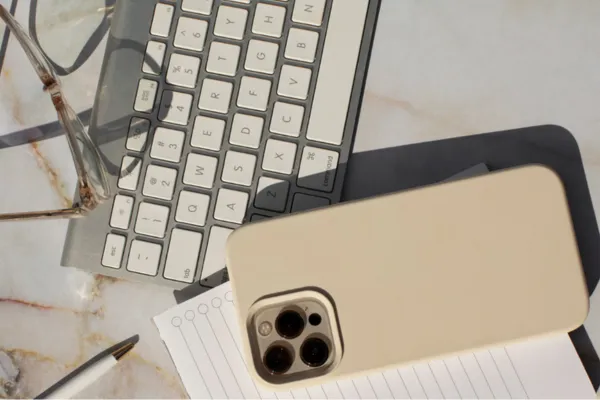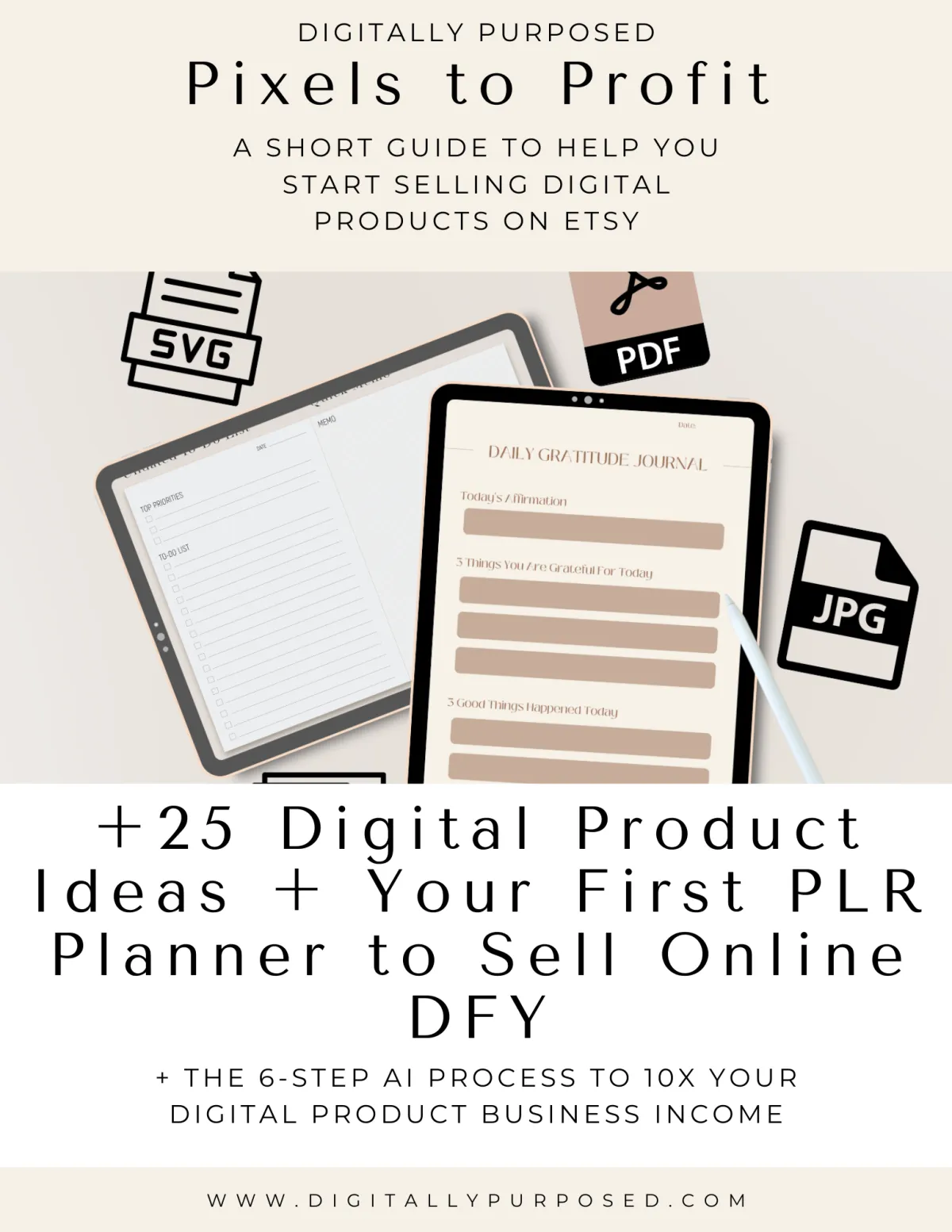BLOG
How To Sell Digital Products Online

How to Create and Sell Notion Templates on Etsy
Notion templates are high-ticket digital products that are FANTASTIC sellers on Etsy. Not only do they come in so many different varieties and unique niches, but their price point makes them a digital product that we should all have on our radar as Etsy sellers.
Notion templates often sell for $15 or more, with huge all-in-one life planners sometimes selling for $30+. These higher prices mean you can sell fewer while still making a great income.
Interested? I’m going to walk you through how to create and sell Notion templates on Etsy and what a best-selling Notion template looks like.
Research Notion Template Niches
As is true for every digital product on the market, product research is critical for creating a best-seller. After all, few things are more discouraging than spending days creating a product only to list it and have it disappear down the Etsy search rabbit hole.
Complete product research with Etsy-specific tools like Everbee or eRank to find Notion template products with strong search volume but less competition.
This ideal combination ensures you have a product set up to be found by many customers but won’t have to compete with as many other sellers.
I also recommend typing into Etsy’s search bar “Notion Template” and seeing what words appear after it. “Life planner,” “business,” “student,” and “2024” were some of the top populated results that came up for me today. This step is a great way to get a starting point for where to complete further product research.
Pinterest trends and social media are other terrific resources. Using Pinterest trends, type in different related search terms to “Notion Template,” then narrow your search down to terms specific to the product you have in mind, such as “Notion Template Aesthetic.” When you scroll down, Pinterest populates some of the most popular pins with that search term so you can see for yourself what people expect and like when searching that keyword.
Social media, like TikTok and Instagram, are great for providing insights into what kind of Notion template you should create. A quick search on Instagram for “Notion templates” provides a lot of great visuals for what aesthetics are currently popular, so I strongly recommend doing this as part of your product research. There are also a lot of Instagram posts demonstrating how people like to use Notion, which gives you fantastic insight into how you can cater your templates to suit different user needs and preferences.
Study What Makes a Notion Template a Hot Seller
Creating a decent Notion template on its own isn’t enough. Even if you pick a hot-selling category after completing product research, you’ll need to determine what will set your Notion template apart from the rest AND what makes a Notion template extra special.
Remember, there are tons of free Notion templates offered by bloggers, YouTubers, and Notion itself. You need to nail down what makes your Notion template worth that $15+ price point. What will make someone click and purchase your template above all else?
During my product research, integration was one of the key factors connecting hot-selling Notion Templates, regardless of theme.
Creating and integrating your Notion templates takes time and comes with a learning curve that many aren’t willing to break through. Best-selling Notion templates often came with interactive home dashboards that showed updates from 10, 15, and even 25+ interconnected templates. That built-in integration saves users time and frustration finding where they put notes for this or that.
Another critical factor is making your template extremely user-friendly. Notion isn’t the most user-friendly platform right off the bat. While it has many unique, helpful features, using and connecting pages within one dashboard is intimidating.
Save your customers' energy and frustration by creating a simplified template with everything they need and a connected dashboard showcasing updates and reminders. Add a trending aesthetic, whether that’s a minimalistic look or kawaii colors, and a specific theme, like a student or small business owner planner, and you’ve got a winning combination.
Start With A Notion Template Before Diving Into Original Designs
Now, you can skip this step if you’re already very familiar with the platform, but if you’re just diving in, I recommend playing around with some of Notion’s free templates.
Look up YouTube tutorials on using and designing Notion templates and follow along to learn the platform inside and out. I recommend learning how to seamlessly integrate different pages within one template, especially with an interactive dashboard, to help you compete with other top-selling templates on Etsy.
After you feel comfortable with the platform, move on to step four.
Create an Original Design
Step four is creating an original design. This is the time to put everything you learned to work.
Go into this with a clear plan driven by your product research. I recommend taking notes or outlining how you want everything to look and come together so you don’t forget any pages or features during the creation process.
Take Advantage of Notion Widgets
A key part of building best-selling Notion templates is taking them to the next level with Notion widgets. For example, you can embed Spotify trackers, Notion charts, weather widgets, Notion quotes, Google Calendar, and many other valuable embeds to set your template apart.
Plus, these widgets offer increased value for your customer as they further integrate other tools they may be using, like Google Calendar or Spotify, or provide them with information, like the weather forecast, without needing to spend the time Googling it each day. For a student with a strict academic Google calendar, having this integrated into their student Notion planner is invaluable!

Include Instructions With Your Template
The best Etsy digital products, especially more complicated ones like templates, include instructions. This eliminates any confusion your customers may have and reduces how many questions you receive and need to answer, so it’s a win-win!
Like many people, I prefer watching a quick video tutorial and walkthrough, so I recommend using a program like Loom to film a short tutorial video on downloading and using your Notion template. To help you market your product better, you can even create a video demonstration to include with your product listing so users get a clear idea of what they’re buying and the value it offers.
Remember, if you don’t show people all the benefits and features of your product, they may miss them and decide to go with a different product. Demonstrate the widgets and integration, and showcase each page to give potential buyers a clear understanding of your product. Then, include a more detailed explainer video and instructions to guide the buyer through downloading and using the product post-purchase.
The easier you make it for the buyer, the more likely they are to enjoy using the product (and hopefully, leaving you a positive review at the end of all this!)
List Your Notion Template
You’ve put in the hard work, and it’s time to list your Notion template. This is where many people get confused — how do you create a template that others can purchase?
Fortunately, Notion makes this easy. Start by:
Clicking the save button in the right corner of the app
Then, click toggle on the “Share to web” button
After clicking share, check the following settings:
Make sure “Allow Editing” is turned off.
“Allow comments” should also be turned off so customers don’t directly leave feedback for others to see on the template.
Click “Allow duplicate as template” to ensure customers can save a copy of the template.
Ensure search engine indexing is off so your template isn’t public online.
Then, create a PDF to package everything for your listing. Include the following:
A link to your Notion template
Your video or written instructions on how to use the template
Terms of use (For example, you’ll want to remind customers that they can’t share or sell this template)
Market Your Product
Last but certainly not least, you must market your product, especially if you’re a newer shop!
If you don’t have an online audience, you’ll want to work on creating an online community of your ideal audience. Many Etsy sellers find Instagram and Pinterest to be the best for showing off digital products, but TikTok and other platforms can also be great.
Be honest with yourself and consider how much time you have to dedicate to social media and what platforms you’re most likely to keep up with. It’s better to have one or two consistent platforms than five social media platforms with very little content.
Creating an email list is another excellent way to build a way outside third-party platforms, like Etsy and social media, to contact your audience. So, I recommend starting with that as early as possible.
Final thoughts
Feeling inspired yet? It's time to take action and elevate your Etsy game. Whether you're just starting out or looking to scale your business, Digitally Purposed is here to guide you every step of the way. Don't hesitate any longer—join me and let's unlock the full potential of your Etsy shop together.
Dive into Digitally Purposed: The Digital Product Profit Formula and experience firsthand the power of mentorship. With weekly trainings, live Q&A sessions, and a supportive community by your side, success is within reach.
Remember, with the right mentorship and support, your Etsy journey can reach new heights. So, what are you waiting for? Let's make it happen together.

FREE DOWNLOAD
Stuck for Digital Product Ideas?
Grab this free list of 25 digital products (+ the 6-step AI process to 10x your digital product business income) and where to create and sell them here.
© Copyright 2024 Digitally Purposed - Privacy Policy - Terms of Service - Disclosure
The term "Etsy" is a trademark of Etsy, Inc. This course content is intended for use on Etsy.com but is not endorsed or certified by Etsy, Inc.
